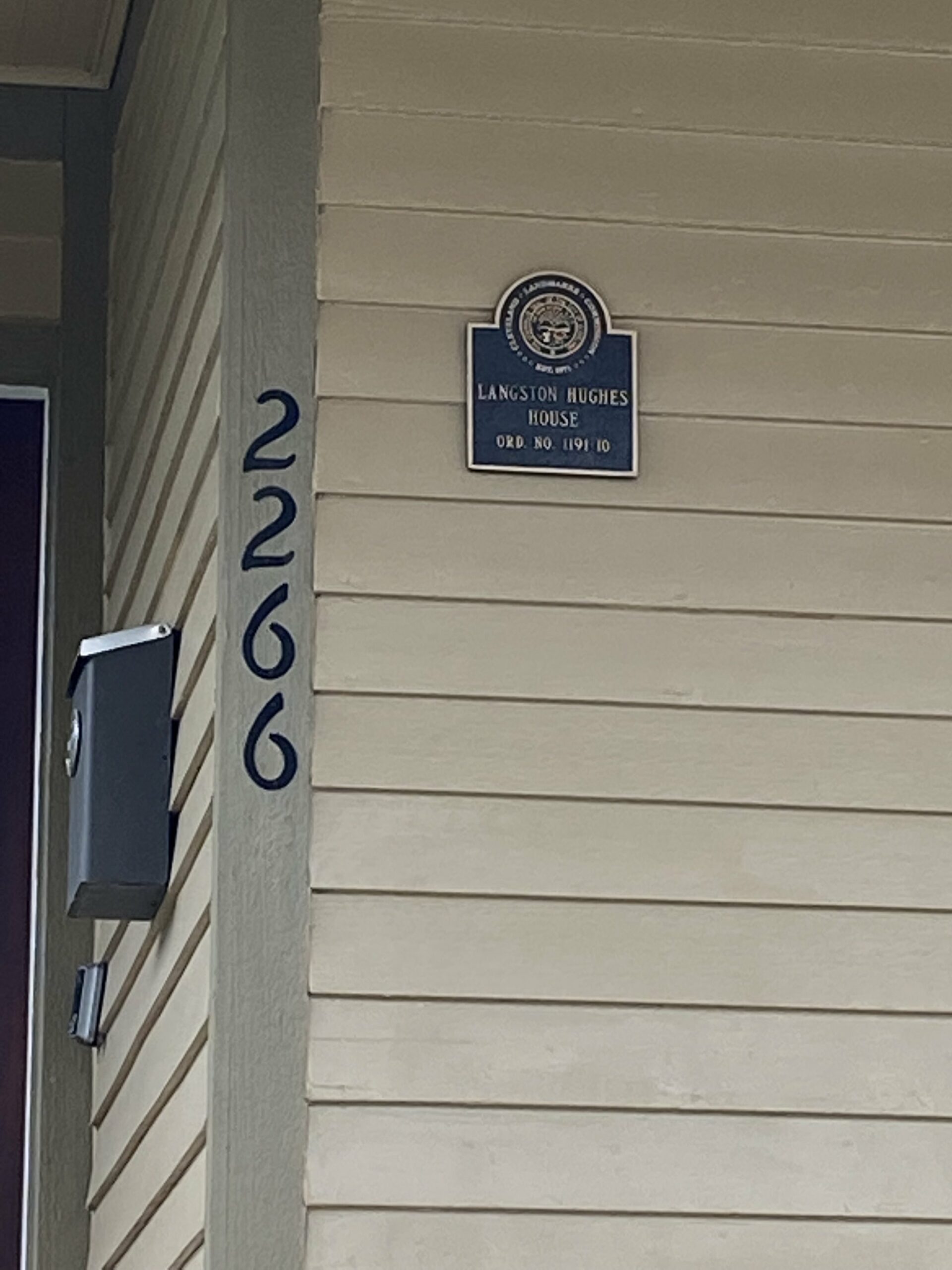Ever wonder where so many historical events happened around town? Or how Cleveland history helped shape the country’s larger history? This academic year, Teaching Cleveland is on a quest to uncover some hidden history gems for you – places where events took place that helped influence this unique community and beyond. And hey – if you didn’t know about any of these, don’t kick yourself! These are places that have no historical markers telling anyone anything about it.
What? The house where Langston Hughes lived while attending Central High School
Where? 2266 East 86th Street
Among literary giants in the U.S., Langston Hughes stands squarely among the most prominent. Hughes would become a central figure in the Harlem Renaissance of the 1920s – but only after he, his mother, and stepfather had joined the thousands of Black families who migrated to Cleveland. Born in 1901 in Joplin, Missouri, Hughes and his family in 1916 moved to Cleveland, where he would spend his formative high school years. He moved into the East 86th Street home in Fairfax in 1917 alone, as his parents left Cleveland shortly after he enrolled at Central High School.
It was in the home on East 86th street, in the third-floor attic, that the young Langston lived throughout his high school years. He wrote that during those years, “I couldn’t afford to eat in a restaurant, and the only thing I knew how to cook myself in the kitchen of the house where I roomed was rice, which I boiled to a paste. Rice and hot dogs, rice and hot dogs, every night for dinner. Then I read myself to sleep.” He worked for a summer operating a dumbwaiter at Halle’s, where he was blown away by $50 bottles of perfume that some people purchased without thinking twice.
It was here in Cleveland that mentors identified his immense talent.
Although he started writing in elementary school, he began writing seriously as a student at Central High School, where many educators, especially his Latin teacher Helen Maria Chesnutt (the daughter of writer Charles Chesnutt), a Black woman, inspired him. While there, he wrote for the school newspaper, edited the yearbook, and began to write creatively. His first poem, “When Sue Wears Red,” emerged from these days, and his first stories appeared in The Monthly and The Belfry Owl, the school’s literary journals. The two founders of Karamu House (then called the Playhouse Settlement), Russell and Rowena Jelliffe, also encouraged him to hone his writing skills.
In The Big Sea, he wrote that he found inspiration in writing about the steel mills where his stepfather worked, “the slums where we lived, and the Brown girls from the South prancing up and down Central Avenue on a spring day.”
Within a few years after leaving Cleveland, Hughes traveled extensively and in 1921 the NAACP published one of his most famous poems, “The Negro Speaks of Rivers” in its periodical The Crisis. A year later, he moved to Harlem and in the ensuing years would make literary and dramatic history with his writing, making him one of the most well-known writers of the 20th century.

Right next door to the Hughes home is the Langston Hughes reading garden.
Read more at the Encyclopedia of Cleveland History.
